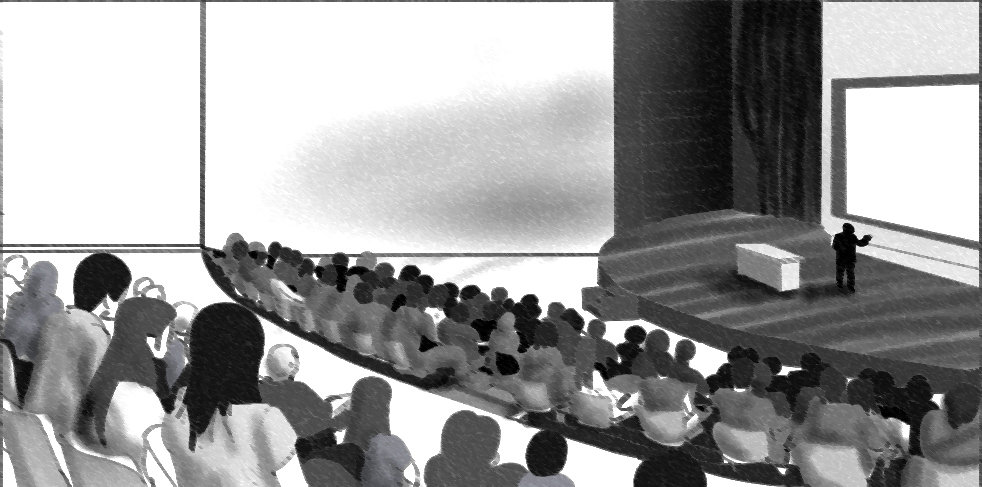
As shopping period draws to a close, an exciting, if not entirely new, phenomenon has arrived on campus. Yale’s biggest classes are getting bigger, heralding the “cult class” as a fixture of contemporary student culture.
What makes a cult class? They’re usually huge lectures, but it’s not just the high enrollment numbers; otherwise, a number of large but otherwise unremarkable introductory courses would qualify.
Instead, cult classes share a few defining characteristics. To begin with, the cult class is taught by a big-name professor. Sometimes, the instructor is a leading scholar in their field: Paul Bloom, Marvin Chun, Shelly Kagan, John Gaddis and George Chauncey all come to mind. Other times, they may simply be adjuncts who have a gift for teaching, with David Malan of CS50 being the most prominent example. Regardless of their background, these instructors own the course with their larger-than-live personalities, serving as lightning rods that conduct information and electrify their students. In a sense, the cult class is a revolt against decades of pedagogical research, which has emphasized student-centric approaches to education. In the cult class, the teacher regains his preeminence.
The cult class is an immersive experience with a subculture of its own. It is not just another class but rather an event, relying on social contagion to build a fandom around itself. From film screenings to snack-fueled study sessions, the cult class often extends beyond the cut-and-dry lecture. For this reason, it becomes a topic of conversation in dining halls. With a few exceptions, the cult class is seldom a gut. Guts do not require the investment of time and effort needed to build loyalty and allegiance. For example, the history class “Vikings” was highly popular last spring, but never quite achieved the reputation of “The Cold War,” which was adapted into a book in 2005.
In terms of content, the cult class resists the hyperspecialization so characteristic of the modern academy. It is often cross-listed in multiple disciplines, and targets majors and non-majors alike. The focus of the cult class possesses broad-based appeal: After all, everyone watches “Twenty-First Century Hollywood.” The film studies class with that title now has over 300 students — 20 times the number of majors in the department per class year.
When the Internet first emerged, commentators predicted that technology would kill off the live lecture. Flipped classrooms and video lectures were all the rage. To some extent, the cult class is an offshoot of this trend. In an age of content saturation, the lecture has had to reinvent itself to stay relevant. Platforms like TED have raised the bar for presentational excellence, prompting students to seek out a blockbuster aesthetic in their lectures.
Yet the rise of the cult class also refutes the view that online learning will replace physical classrooms. If anything, the cult class demonstrates that students crave intellectual communion with their peers. Yes, they want bespoke, artisan, personalized instruction, but they also want to be part of a shared experience — “a company of scholars and a society of friends.”
That said, the cult class is not without its pitfalls. Spectacle can supplant substance, and charisma can overshadow content. Students may end up becoming passive consumers of their instructors’ views, with little critical engagement. But this objection romanticizes what happens in the typical classroom: Students nod off and check their email, provided they are actually present. If cult classes keep students that much more engaged, or nudge one or two kids to go into a field, why should we begrudge them?
In the long run, what will happen, I think, is that Yale’s course offerings will polarize, with cult classes on one end, intimate seminars on the other and everything in between fighting a war of attrition. With the opening of the new residential colleges, and no planned increases in tenure-track faculty, the trend towards cult classes will only intensify.
Cult classes, therefore, offer a glimpse of what Yale’s future might look like. The University needs to prepare for this shift. Are there enough venues to accommodate courses of this scale? Will there be enough teaching fellows to staff sections for cult classes? More departments will probably have to offer at least one or two cult classes, in order to capture the imaginations of impressionable freshmen. In the meantime, we can all huddle in the art gallery auditorium and listen to Ronald Gregg speak about Hollywood blockbusters. What was that he said about them being self-referential?
Jun Yan Chua is a sophomore in Saybrook College. His column usually runs on alternate Fridays. Contact him at junyan.chua@yale.edu .







